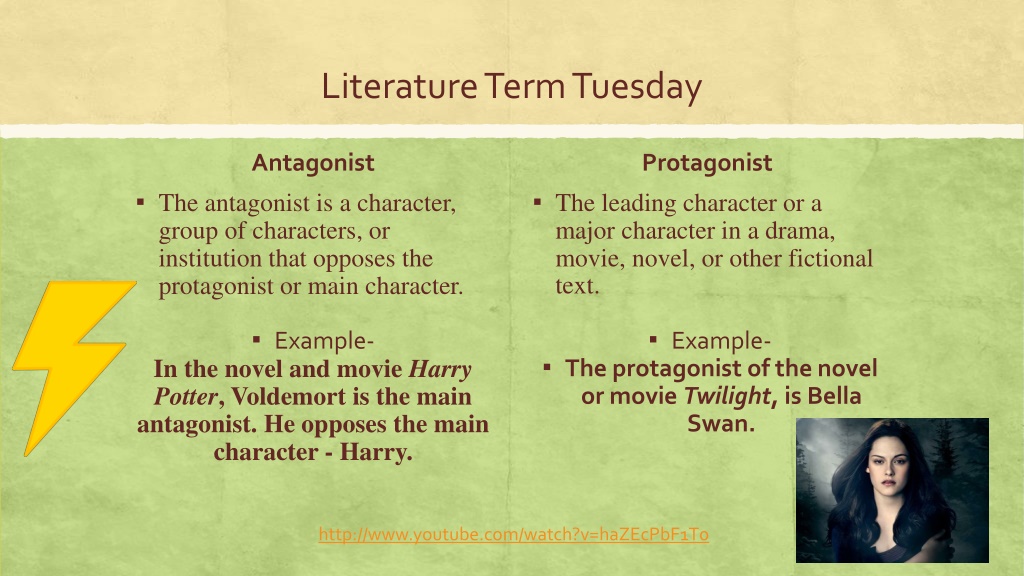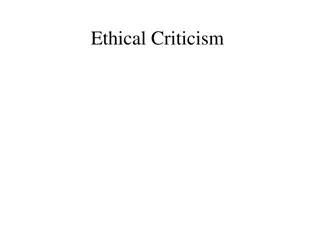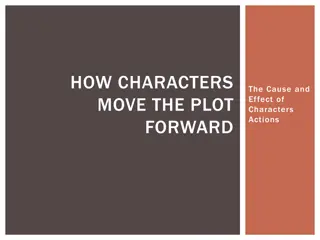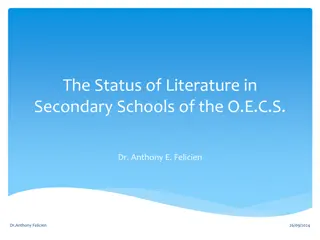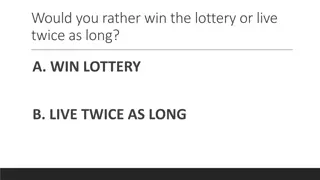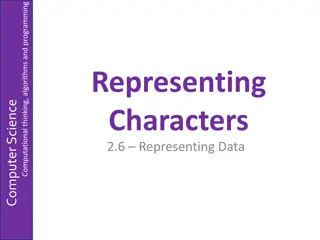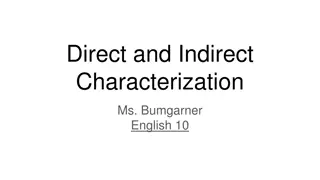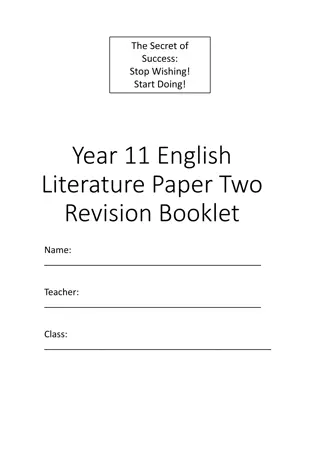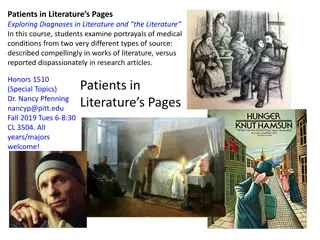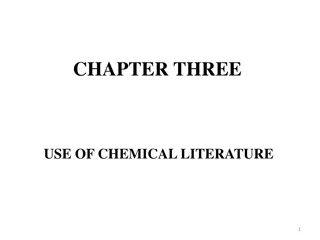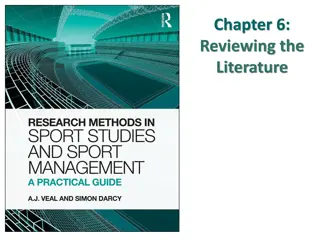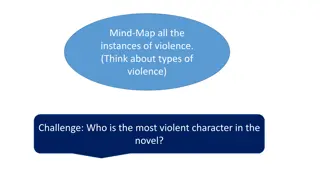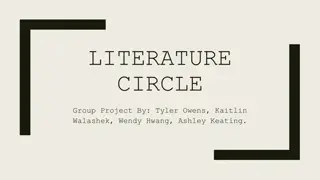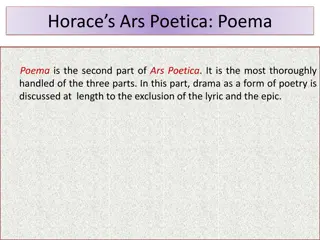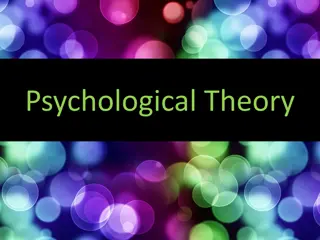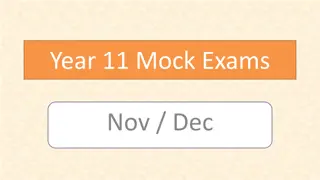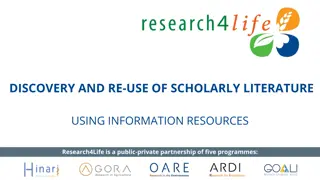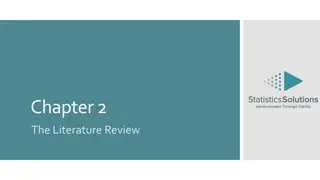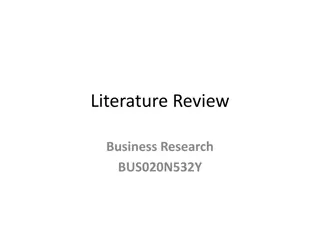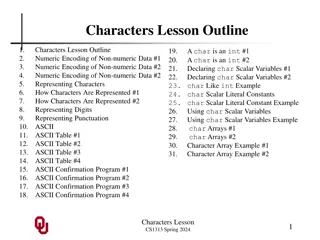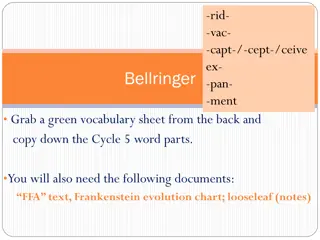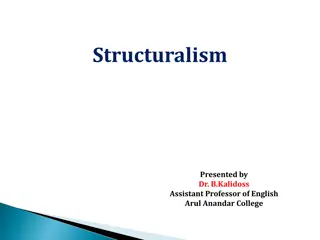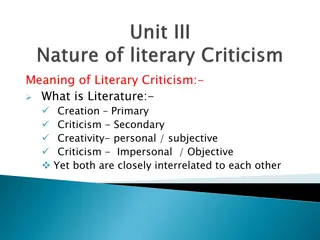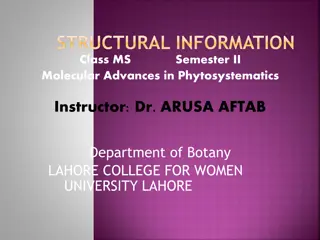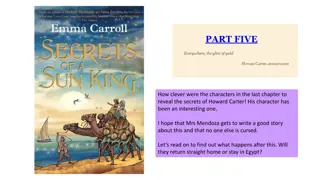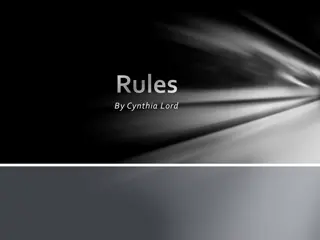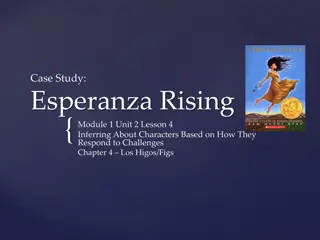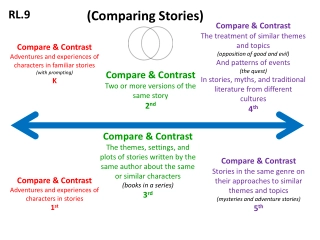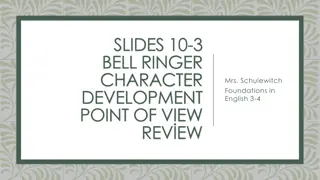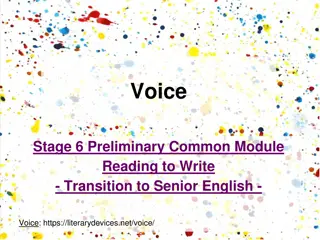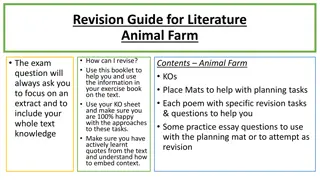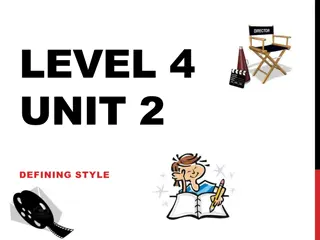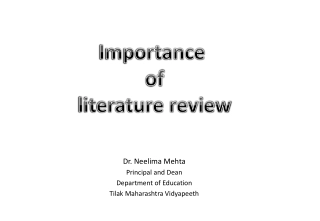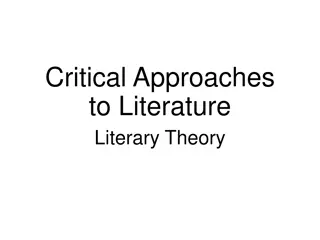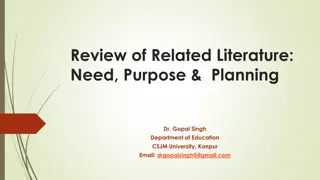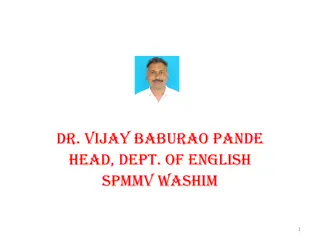Understanding Characters in Literature
Characters in literature play crucial roles, such as protagonists and antagonists, shaping the narrative and conflict. From Bella Swan in "Twilight" to Voldemort in "Harry Potter," characters drive the story forward through their interactions and opposing motivations. Through activities like persuasive writing and crafting thesis statements, students delve into character analysis, honing their writing skills while exploring the dynamics of protagonists and antagonists.
Download Presentation

Please find below an Image/Link to download the presentation.
The content on the website is provided AS IS for your information and personal use only. It may not be sold, licensed, or shared on other websites without obtaining consent from the author. Download presentation by click this link. If you encounter any issues during the download, it is possible that the publisher has removed the file from their server.
E N D
Presentation Transcript
Literature Term Tuesday Antagonist Protagonist The antagonist is a character, group of characters, or institution that opposes the protagonist or main character. The leading character or a major character in a drama, movie, novel, or other fictional text. Example- Example- The protagonist of the novel or movie Twilight, is Bella Swan. In the novel and movie Harry Potter, Voldemort is the main antagonist. He opposes the main character - Harry. http://www.youtube.com/watch?v=haZEcPbF1T0
Homework Signed last page of syllabus. Due NO LATER than Tuesday, August 30th.
Snowball Activity Please finish filling in paragraph 3. Crumple paper. Throw paper. Retrieve new paper. Write name. Fill in for paragraph 4. Return to original writer.
Goal of Persuasive Writing The goal of persuasive writing is to convince your reader that your opinion about an idea are correct. In this writing activity you will need to argue in support of an idea or argue against an idea. Your writing must clearly argue either for or against the topic. Do not try to take the middle ground and argue for both sides of the issue. Use persuasive language remember you are trying to convince the reader to agree with your argument.
Writing Your Paragraph Must: Have a title Have an engaging topic sentence Have at least 3 supporting points and examples Be spell checked Have the first sentence indented Have a clear concluding sentence Words and Phrases to Avoid: I, My, We, Us (Write in 3rd person only please) I think, in my opinion, I believe In conclusion These are all the reasons why That is why I
What Is A Thesis Statement? A thesis statement is a guide map to your entire paper. For most student work, it's a one or two sentence statement that explicitly outlines the purpose or point of your paper. The rest of the paper will support or back up your thesis, so a thesis is normally placed at or near the end of the introductory paragraph.
What Does A Thesis Statement Include? The most important thing to understand before you create your thesis statement is that it MUST contain two parts, a subject subject (also called a topic) and an opinion or assertion about that subject. opinion or assertion about that subject. The thesis sentence must contain an arguable point. It must not simply make an observation. Assertion (Claim) About Topic Topic
What Does A Thesis Statement Include? Strong Thesis Statement With An Arguable Point Because the polygraph has not been proven reliable, even under the most controlled conditions, its use by private employers should be banned. Weak Thesis Statement That Makes An Observation The first polygraph was developed by Dr. John A. Larson in 1921.
Why Have A Thesis Statement? An essay without a thesis statement is like a car without a driver Helps you start drafting. Helps keep you focused. Helps to narrow your subject Serves as a point of
Why Have A Thesis Statement? The thesis statement must control the entire argument. Every paragraph in your paper exists in order to support your thesis. Accordingly, if one of your paragraphs seems irrelevant to your thesis you have two choices: get rid of the paragraph, or rewrite your thesis.
Types Of Thesis Statements: Persuasive An persuasive paper makes a claim based on opinion, evaluation, or interpretation about a topic and proves this claim with specific evidence. A persuasive thesis statement attempts to convince the reader of something!
Types Of Thesis Statements: Persuasive Persuasive thesis example Persuasive thesis example: High school graduates should be required to take a year off to pursue community service projects before entering college in order to increase their maturity and global awareness.
What Does A STRONG Thesis Statement Have? A STRONG thesis statement should: Take A Stand Don t be afraid to give an opinion or criticize Justify Discussion Choose an argument that leaves your reader thinking rather than saying so what or what s your point? Be Restricted Choose a specific and manageable topic - readers are more likely to reward a paper that does a small task well than a paper that takes on an unrealistic task and fails.
But How Do I Write A Thesis Statement? A Thesis Statement generally consists of two main parts 1. Your topic 2. The analysis, explanation, or assertion, that you re making about the topic.
Example Many college students work while attending classes. This is NOT a strong thesis statement as it is only a topic. Working while attending college classes remains necessary for many students, but unfortunately many problems result from the difficulties of balancing work and school. This IS a strong thesis statement because it has a topic and an argument/assertion about that topic.
Thesis Statement Problems Do Not Do The Following: Announce your thesis: In this essay, I am going to tell you about Mackenzie College and why you should go there. Confuse your reader: Make sure that the topic and point are clear. Cannot be a fact: Doesn t allow you to prove anything because it s already factual. Don t be vague: Words like good, bad, right, and wrong, don t convey specific meaning. Cannot be a question: Don t you think animal testing is inhumane? Does not give the point of the paper. Leaves it open for readers to fill in the blank.
